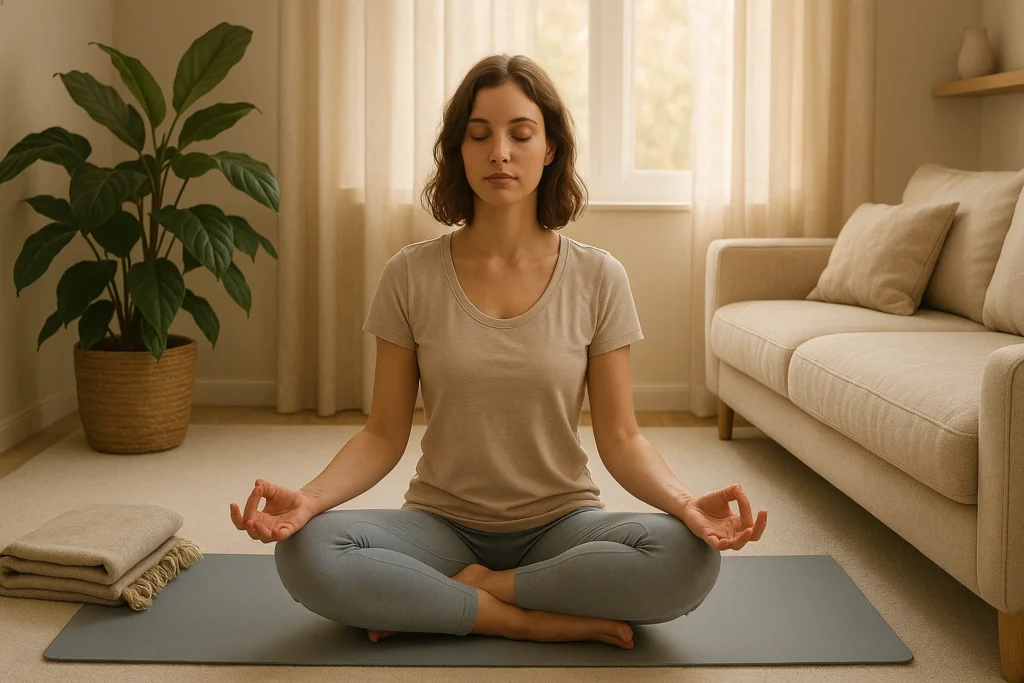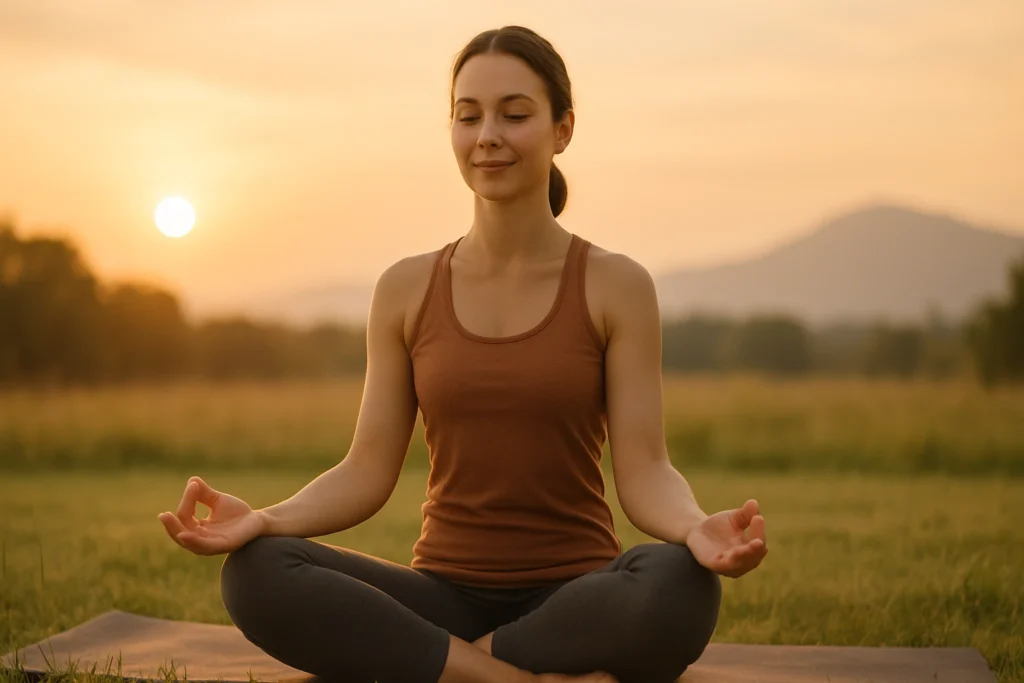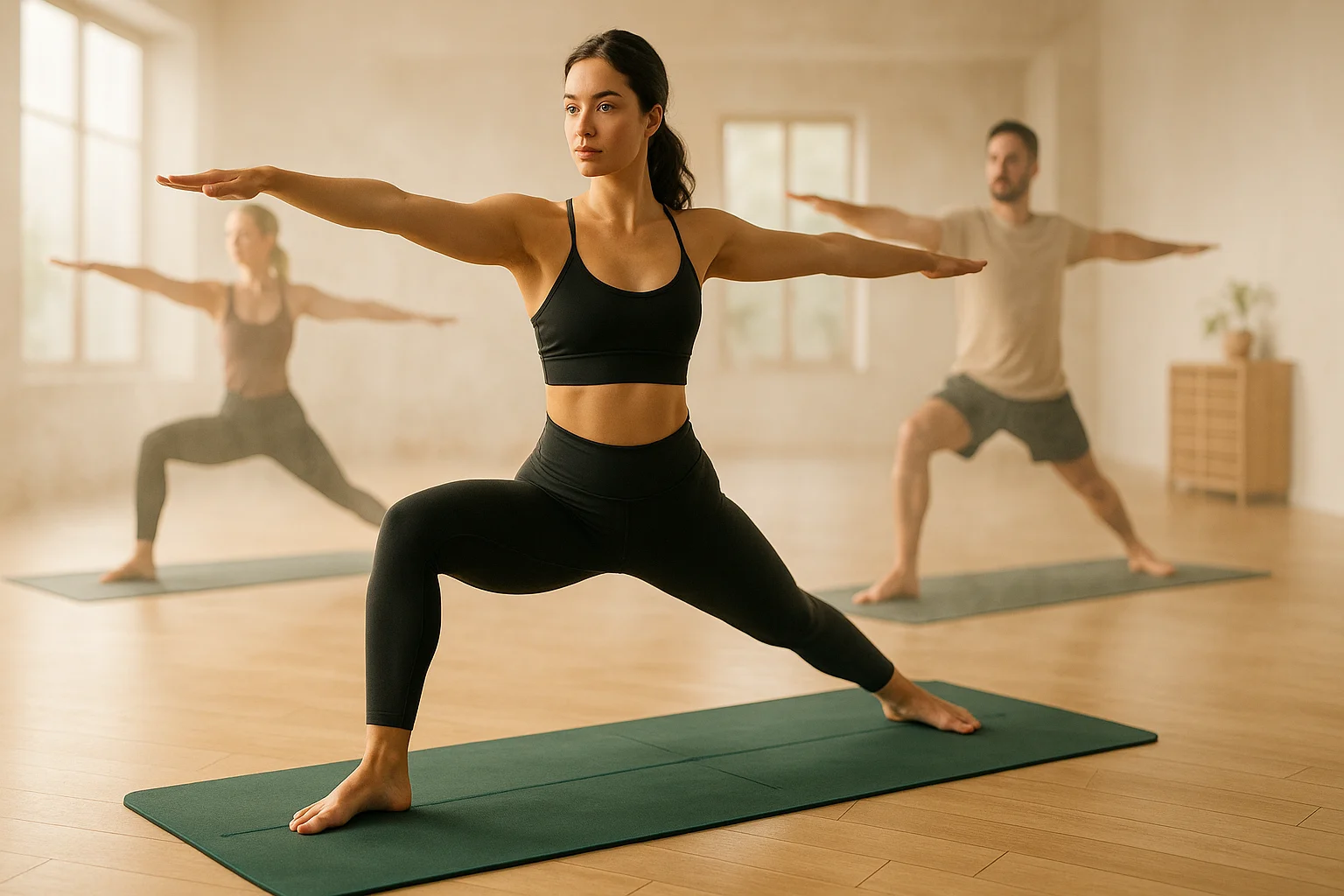
Ever slipped mid-Warrior II in a heated class? That’s where the right yoga mat for heated practice comes in. Many people even type ‘h yoga mat’ by mistake when they’re really searching for a reliable non-slip mat that handles sweat and heat. I’ve tested a lot of mats, and a good sweat-proof yoga mat can help you feel steadier in heated studios. Want more gear tips? Check out our Best Yoga Gear Guide for expert reviews on mats, props, and more!
This page contains paid/affiliate links. As an Amazon Associate we earn from qualifying purchases, and we may earn commissions from other partners—at no extra cost to you. Links marked with ‘#ad’ are affiliate links, meaning we may earn a commission at no extra cost to you. Learn more.
Table of Contents
- Key Takeaways for Picking a Mat for Hot Classes
- Why the Right Mat for Hot Yoga Matters
- Key Features of a Sweat-Proof Yoga Mat (Based on Reviews)
- Comparing Leading Yoga Mats: Materials, Pros & Cons
- Yoga Mat Comparison Tool
- Top 3 Hot-Yoga Mat Picks
- Choosing the Right Mat for Your Practice
- Caring for Your Yoga Mat
- Are Mats for Heated Classes Worth the Investment?
- FAQs About Yoga Mats for Heated Practice
- Conclusion
Key Takeaways for Choosing the Best H Yoga Mat
- Grip is Essential: For hot yoga, a non-slip mat designed for heated classes helps prevent slips, supporting safety and stability.
- Durability That Pays Off: A well-made yoga mat for hot practice doesn’t wear down after a few months—it can last for years, saving you money in the long run.
- Eco-Friendly Options: If sustainability matters to you, go for natural rubber or cork mats, both of which support a mindful practice.
- Fit for Your Flow: The right yoga mat is the one that matches your body and your practice, from cushioning to grip.
- Balance Comfort & Stability: The ideal mat offers cushioning for joints without compromising balance.
Why the Right Mat for Hot Yoga Matters
Meet Sarah—a devoted Vinyasa yogi who, halfway through a sweaty class, found her standard mat had turned into a slip-and-slide. After she switched to a sweat-resistant yoga mat with a polyurethane surface, her footing felt solid again—and she hasn’t looked back. It’s a common story: regular yoga mats can struggle in hot yoga’s humid, sweaty conditions. That’s why a specialized hot-yoga mat is often the smarter pick for comfort and safety.
Even when soaked with sweat, cork and polyurethane mats for heated yoga keep their grip—letting you stay present with your breath instead of worrying about slipping. For additional ways to enhance your practice, explore our guide on yoga and breathwork for stress relief to complement your hot yoga sessions.
The Slippery Problem of Standard Mats
Sweat comes with the territory in hot yoga, and most standard mats just aren’t built to handle it. Here’s what usually goes wrong:
- Poor Wet Grip: Materials like PVC become slippery when wet, raising the risk of slips in balance poses.
- Lack of Sweat Absorption: Many mats repel moisture, which pools and reduces traction.
- Durability Issues: Heat and frequent cleaning wear out cheaper mats quickly.
A sweat-resistant yoga mat, however, is engineered to tackle these challenges, helping support a more stable, safer-feeling practice.
“A great yoga mat with strong grip lets you dive into your flow, not worry about slipping.”
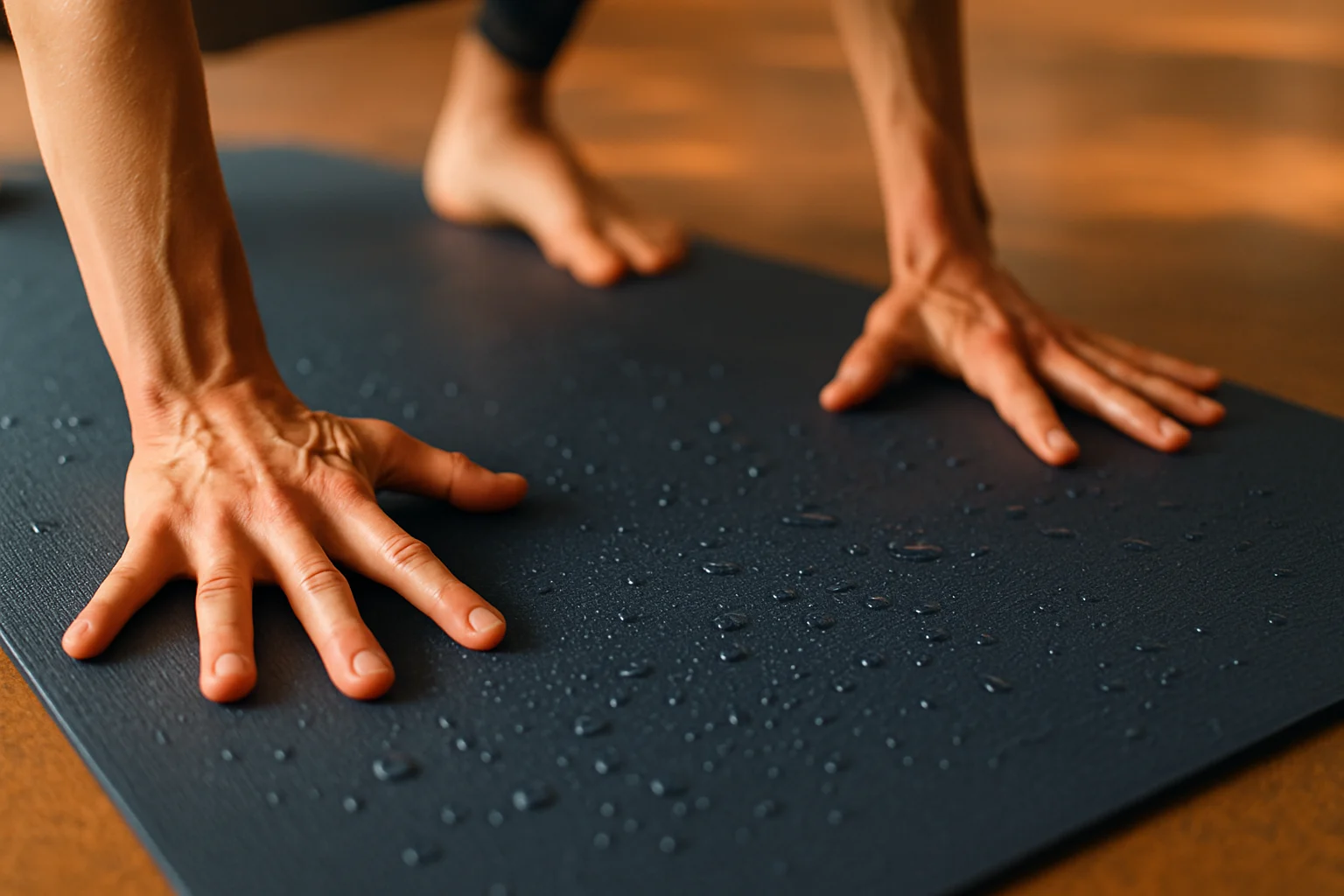
Key Features of a Sweat-Proof Yoga Mat (Based on Reviews)
When you’re choosing a mat for hot yoga, a few features matter most during sweaty sessions. Looking across yoga mat reviews, grip shows up again and again. Polyurethane and cork tend to get high marks, and brands like Liforme describe mats that can feel grippier when damp, which many people say helps them stay steady in tougher classes. For those with sensitive skin, consider our guide on hypoallergenic yoga mats for allergy-aware options.
What Yoga Mat Reviews Say About Grip
Grip is the cornerstone of any yoga mat designed for heat. For instance, brands like Liforme use polyurethane (PU) tops that can feel grippier when wet, which many find helpful for sweaty sessions. Other materials include:
- Polyurethane (PU): Offers excellent wet and dry grip, often paired with natural rubber for stability.
- Natural Rubber: Grippy, sustainable, and firm, ideal for most hot yoga practices.
- Microfiber: Absorbs sweat like a towel, becoming grippier when damp.
- Cork: Naturally antimicrobial and grippy when wet, a great eco-friendly choice.
Some mats add texture—like raised dots—to offer extra traction, helping your hands and feet feel anchored through challenging poses.
Thickness & Cushioning
In your yoga mat selection, thickness can make or break your comfort and balance. Most hot yoga mats range between 3 mm and 6 mm:
- Thinner Mats (3–4 mm): Stable and portable, ideal for advanced yogis needing ground connection (e.g., Manduka’s GRP Adapt).
- Thicker Mats (5–6 mm): Cushioned for sensitive joints, great for restorative or beginners, but may feel less stable.
A 4–5 mm thickness often strikes a balanced feel for hot yoga.
Durability & Longevity
A durable hot yoga mat can be a smart investment. Materials such as natural rubber or PU hold up well to heat, sweat, and regular cleaning. Multi-layer builds (a grippy top over a stable base) can go for years with basic care. For a reality check, skim user feedback and yoga mat reviews on sites like Yoga Journal to see how those claims play out.
Eco-Friendliness
Many yogis prioritize sustainability. Fortunately, eco-friendly yoga mats abound:
- Natural Rubber: Biodegradable, renewable; OEKO-TEX–certified options exist (check product details for latex-free versions).
- TPE: Recyclable, non-toxic, and lightweight, though less durable.
- Cork: Antimicrobial and sustainable, perfect for eco-conscious yogis.
Avoid PVC, as it’s non-renewable and less environmentally friendly. For more on sustainable practices, check out our guide on sustainable yoga practices in Ocean City.
Weight & Portability
For studio commuters, weight matters. Natural rubber mats (5–8 lbs) are stable but heavy, while TPE mats (2–4 lbs) are portable. Travel-friendly yoga mats, like foldable 3 mm options, can suit frequent travelers.
Absorbency & Hygiene
One of the biggest challenges in hot yoga is dealing with sweat. Open-cell mats—like those made of PU or microfiber—soak up moisture to improve grip, though they may require more frequent deep cleaning. TPE mats usually clean up quickly with a simple wipe, but they can become slick when damp. No matter the material, always air dry your hot yoga mat to help minimize mildew.
Design & Aesthetics
The design of your mat can influence how you feel on the mat. Pick colors or patterns that motivate and ground you during practice.
My towel pick: Full-length microfiber (70″×26″) with corner pockets keeps traction steady on PVC/TPE mats.
PU-top mats usually don’t need a towel; if you use one, mist lightly and spot-test first.
Comparing Top Yoga Mats: Materials, Pros & Cons
Different materials suit different needs. Here’s a quick comparison:
| Material | Pros | Cons | Best For |
|---|---|---|---|
| Natural Rubber | Grippy, durable, eco-friendly | Heavy, initial smell, not for latex allergies | All hot yoga styles |
| Polyurethane (PU) | Excellent wet grip, durable | Shows sweat marks, pricier | Sweaty Vinyasa, Bikram |
| Microfiber | Absorbent, grippy when wet | Slippery when dry, slow to dry | Heavy sweaters |
| TPE | Lightweight, recyclable, affordable | Less durable, moderate grip | Beginners, budget buyers |
| Cork | Antimicrobial, sustainable | Less cushioned, may crack | Eco-conscious yogis |
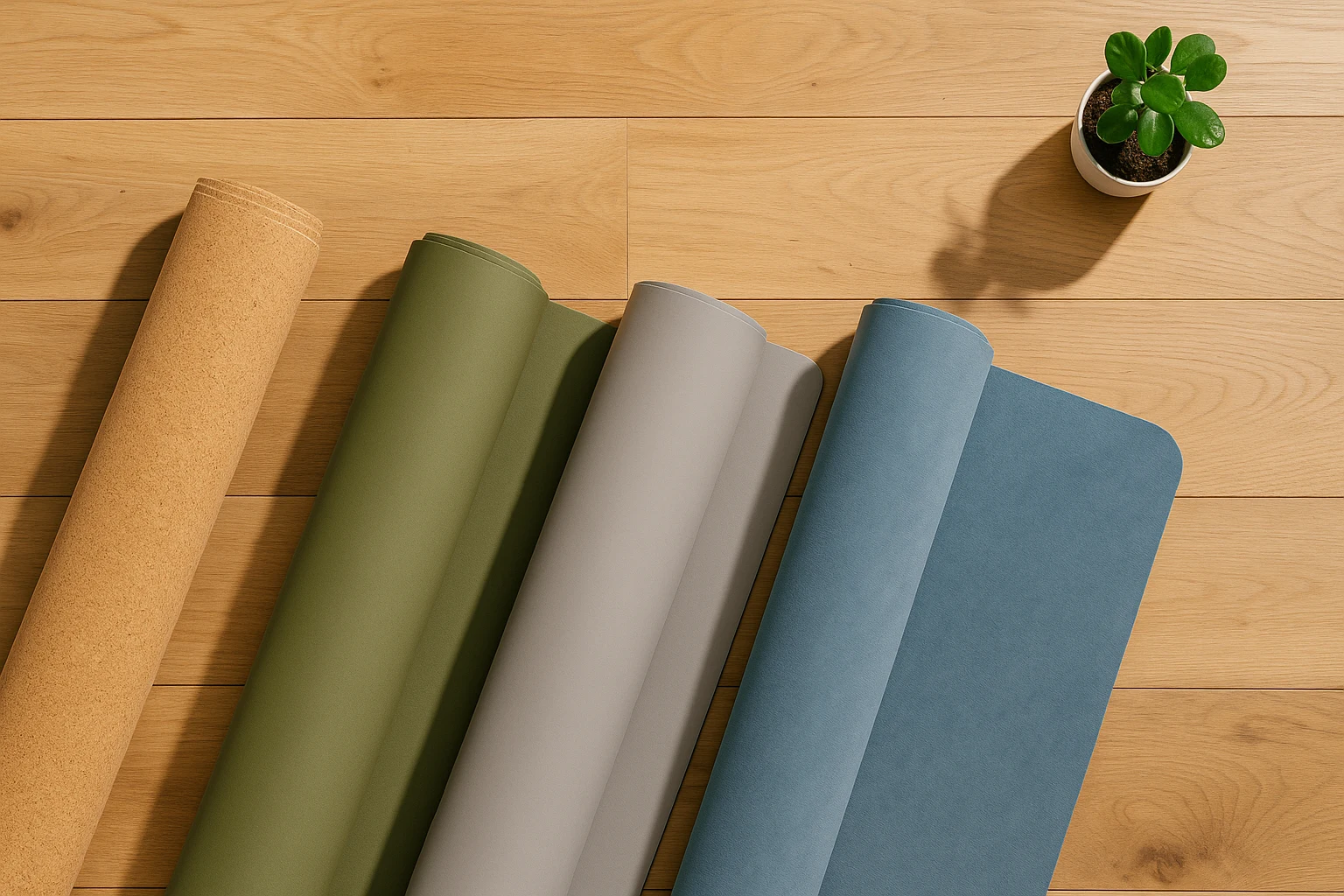
Yoga Mat Comparison Tool
Compare top yoga mats for heated practice to find your perfect match. Select features to see which mat suits your practice!
Find Your Ideal Hot Yoga Mat
Use this tool to compare mats based on key features. Pick a material, thickness, and price to see a matched recommendation.
Matched pick based on your choices:
Ready to choose? Here are the top 3 hot-yoga mats that fit the criteria above.
Top Hot-Yoga Mat Picks
Top 3Pick your feel: max-grip PU, budget dry-grip, or soft suede/microfiber.
ORW | OREN’S Hot Yoga Mat
What I use: PU tops get tackier as you sweat—ideal for heated Vinyasa/Bikram.
- Best for: Sweaty studios; confident traction in flows
- Format: PU top + natural-rubber base
Gaiam Dry-Grip Yoga Mat
Starter pick: sticky dry-grip in warm classes; add a towel for heavy sweat.
- Best for: Warm classes / light–moderate sweat
- Format: PVC “dry-grip” topcoat
balancea Suede/TPE Yoga Mat
Soft suede-feel top that grips when damp—lightly mist if class starts dry.
- Best for: Softer feel; sweaty flows without a separate towel
- Format: Suede/microfiber top + TPE base
Choosing the Best H Yoga Mat for Your Practice
Your ideal yoga mat selection depends on your practice, body type, and preferences. Here’s how to match a sweat-proof yoga mat to your needs:
Best Mat for Heated Vinyasa Classes
For heated classes, prioritize wet grip and absorbency. A 4–5 mm non-slip mat like Liforme’s often excels here.
Ideal Mat for Power Yoga & Ashtanga
These dynamic styles need dry grip and durability. A 3–4 mm natural rubber mat offers stability for non-heated studios.
Supportive Mats for Restorative & Yin
Comfort is the name of the game in long holds. A 5–6 mm TPE or rubber mat gives you extra cushion, even in heated rooms. Want more restorative ideas? See our guide on restorative yoga poses for healing.
Choosing the Right Thickness for Beginners vs. Advanced Yogis
If you’re new, a 5 mm mat for heated practice adds a bit of forgiveness. Many experienced yogis lean toward 3–4 mm for a closer floor feel. Either way, reliable grip is non-negotiable.
Yoga Mats for Specific Needs in Heated Practice
- Sensitive Joints: Choose 5–6 mm mats for extra padding.
- Heavy Sweaters: Opt for PU or microfiber for maximum absorbency.
- Travelers: In your yoga mat selection, pick lightweight TPE or foldable 3 mm mats.
- Allergies: Ensure latex-free natural rubber or TPE.
Caring for Your Yoga Mat
Proper care extends your mat’s life and keeps it performing like new:
- Wipe After Use: Use a damp cloth with mild soap or vinegar. Avoid harsh chemicals.
- Air Dry: Hang or lay flat to prevent mildew.
- Deep Clean: Give it a weekly wipe; machine-wash removable microfiber covers only if the manufacturer says it’s okay (cold cycle, mild detergent, no fabric softener).
- Store Properly: Roll it loosely and keep it out of direct sun.
My cleaner pick: Water-based spray with microfiber cloth keeps traction consistent after hot classes.
For PU tops, spray onto a damp cloth (don’t soak), wipe, then air-dry; spot-test first.
Are Mats for Heated Classes Worth the Investment?
Often, yes. While they cost more ($60–$100+), a non-slip mat designed for hot practice can add traction, durability, and hygiene. For example, better grip may help reduce slip-related mishaps, and durable mats like Manduka’s are known for longevity and may last years with proper care. Plus, a reliable mat can deepen your practice, which may boost confidence and flow.
“Your yoga mat isn’t just gear—it’s your practice’s foundation.”
FAQs About Yoga Mats for Heated Practice
Conclusion
The best hot-yoga mat is the one that keeps you steady when the studio heats up. If you want max wet-grip, choose a PU/rubber mat; for a softer feel that grips when damp, go suede/microfiber; for budget dry-grip in warm rooms, a PVC topcoat can work—add a full-length towel for heavy sweat. Use the Mat Finder above to match material, thickness, and size, then care for your mat with gentle wipes and air-drying so it lasts.
My hot-class pick: ORW | OREN’S Hot Yoga Mat — PU/Rubber • 4–5 mm • 72×26″. The PU top gets tackier as you sweat for confident traction.

